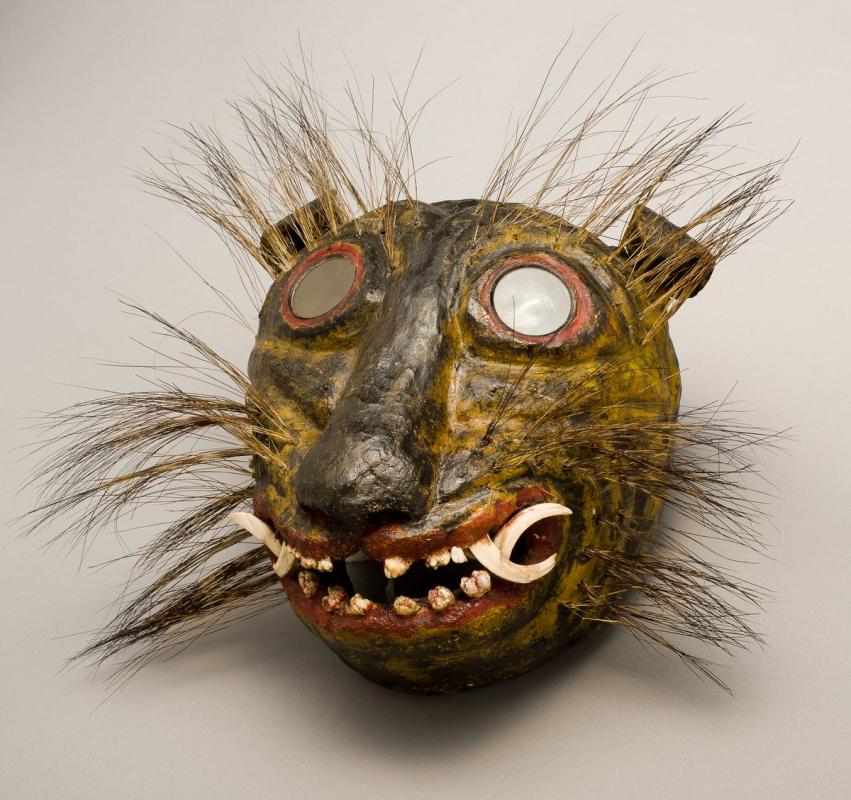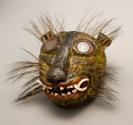Jaguar Mask
Artist:
Unknown
Place made:Guerrero, Mexico
Period: Republic of Mexico
Date: late- 19th century
Dimensions:
height: 13 in. (33 cm)
width: 12 in. (30.5 cm)
depth: 7 1/2 in. (19.1 cm)
Credit Line: San Antonio Museum of Art, The Nelson A. Rockefeller Mexican Folk Art Collection
Object number: 85.98.642
Provenance: Collection of R. D'Harnoncourt; gifted to the Rockefeller Collection
Label Text
The jaguar has always had powerful presence in Mesoamerican culture. It appears in the archeological record of the Olmec, Maya, Mexica, and other civilizations, and is repeatedly represented in the codices (manuscripts) created during the period of Spanish colonization (ca. 1521–1810). Jaguars appear in dance traditions throughout Mexico, known as the fights of "tigers." In these dances, men dressed as jaguars are chased and “captured,” symbolizing the harnessing of nature by human beings.
El jaguar siempre ha tenido una presencia poderosa en la cultura Mesoamericana. La imaginería con jaguares aparece en el registro arqueológico de los Olmecas, Mayas, y Mexicas, entre otras civilizaciones, y se representa repetidamente en los códices creados durante la época virreinal (ca. 1521-1810). Los jaguares aparecen en bailes tradicionales conocidos como Pelea de tigres, en México. En estos bailes, hombres vestidos como jaguares son perseguidos y “capturados'', simbolizando el aprovechamiento de la naturaleza por parte de los seres humanos.
(LA, 2020)
El jaguar siempre ha tenido una presencia poderosa en la cultura Mesoamericana. La imaginería con jaguares aparece en el registro arqueológico de los Olmecas, Mayas, y Mexicas, entre otras civilizaciones, y se representa repetidamente en los códices creados durante la época virreinal (ca. 1521-1810). Los jaguares aparecen en bailes tradicionales conocidos como Pelea de tigres, en México. En estos bailes, hombres vestidos como jaguares son perseguidos y “capturados'', simbolizando el aprovechamiento de la naturaleza por parte de los seres humanos.
(LA, 2020)
On view
In Collection(s)
The San Antonio Museum of Art is in the process of digitizing its permanent collection. This electronic record was created from historic documentation that does not necessarily reflect SAMA's complete or current knowledge about the object. Review and updating of such records is ongoing.




 This resource has been made possible in part by the National Endowment for the Humanities: Exploring the Human Endeavor.
This resource has been made possible in part by the National Endowment for the Humanities: Exploring the Human Endeavor.
